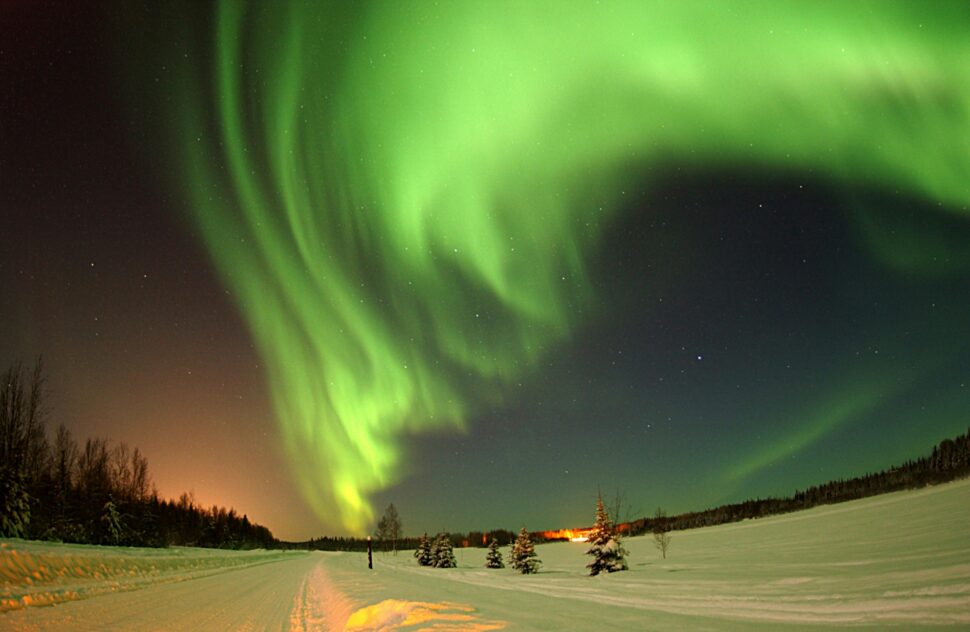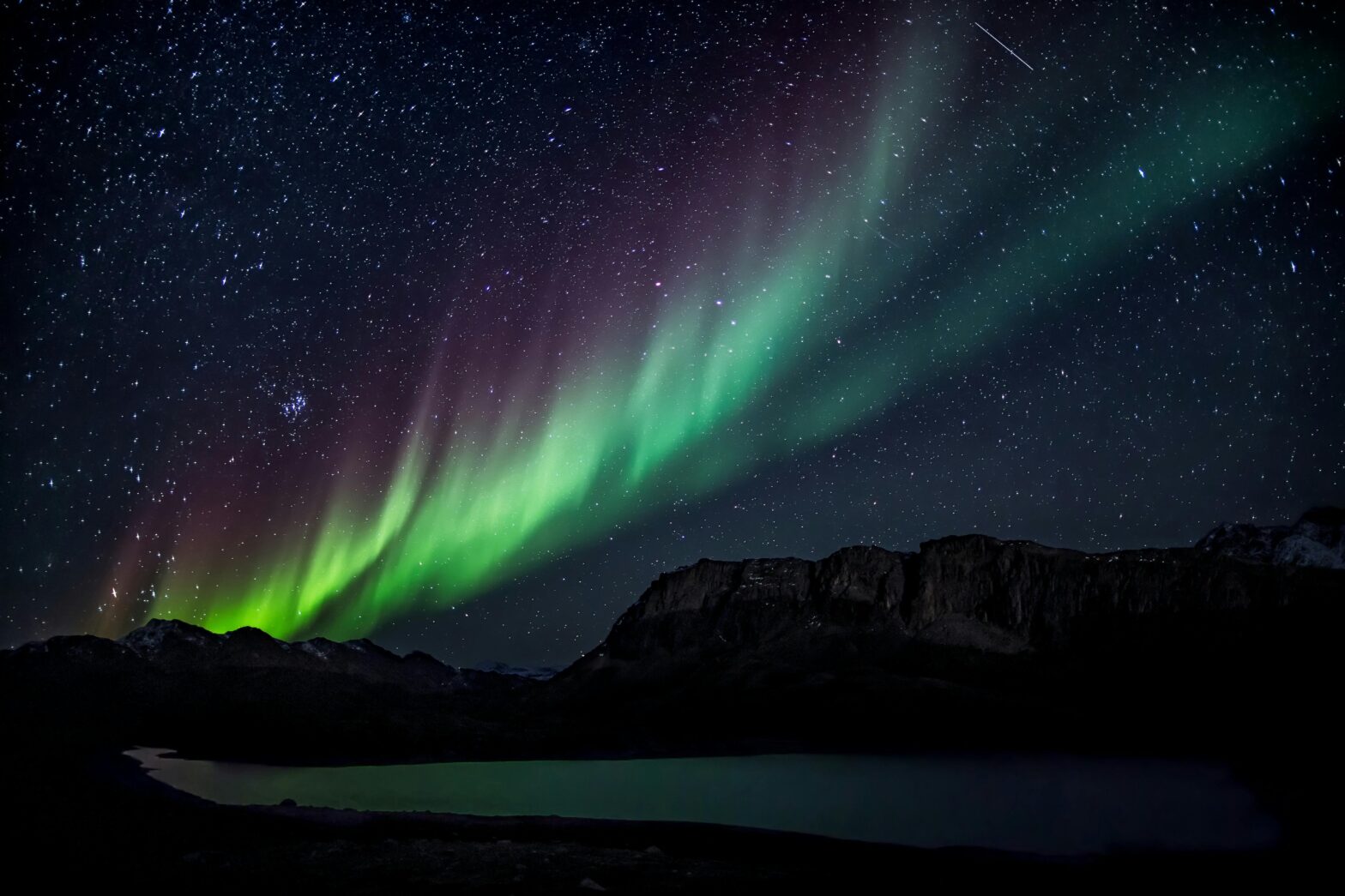For nature and science fans, there’s something as exciting as Thanksgiving and Black Friday happening this year. The aurora borealis northern lights will be more visible than usual across the northern hemisphere. The phenomenon will be taking place today and the day after, as a result of geomagnetic storms. Most commonly seen in the Arctic Circle, the aurora borealis will be a treat for light chasers in North America, outside of Canada and Alaska. While the storms and solar-related activities won’t pose any harm, they will be pulling the northern lights further south for them to be visible in several states. Wondering where you can catch them? Here’s the aurora borealis northern lights forecast.

What Is Aurora Borealis?
Aurora borealis is a phenomenon caused by electrically charged particles from space entering Earth’s atmosphere. When those particles collide with gases like oxygen and nitrogen, it gives them energy. The release of that energy happens in the form of light, typically, green, yellow and red light. What pulls the lights in a certain direction are the Earth’s magnetic fields, which redirects the space particles toward the northern and southern hemispheres. Not only do the lights most commonly show up in the form of rays, but they also appear as spirals and flickers. This dance of light, dependent upon the density of the atmosphere as well, has intrigued humans for many years.
Aurora Borealis Northern Lights Forecast: When and Where Is It Happening?
The solar storm poses minimal threats to satellites, GPS signals and power grids, although it does feature light and magnetism. However, the northern lights themselves are what most people are looking forward to seeing and can more surely count on actually happening. Best seen at night, when the sky is dark and the rays, spirals and flickers of light can really shine, the northern lights are most often seen in the northern and southern regions of the U.S., Europe and Asia. However, Thursday and Friday’s aurora borealis event, thanks to a higher index of geomagnetic activity, will be brighter and additionally visible in some additional northern and upper Midwest states from New York to Idaho. (That’s if the city lights are on the dimmer side.)
Why Is It Happening and When Can We Expect To See It Again?
Since the sun is at the peak of its solar cycle, we can expect an increase in solar activity which means more northern light sightings. The sun enters a new cycle every 11 years when it flips directions of its rotation, causing a range of solar activity events. Along these lines, NASA has reported that the sun being in its solar maximum will continue into 2025.
Will you be keeping up with the aurora borealis northern lights forecast? Are they happening near you this time around?





